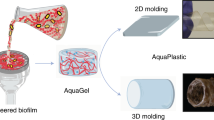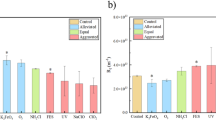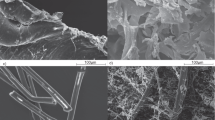Abstract
We hypothesize that transparent exopolymer particles (TEP), present in high concentrations in most sea and freshwaters, are critical agents for biofilm initiation and development in many natural and anthropogenic aquatic environments. These gel-like particles appear in many forms; amorphous blobs, clouds, sheets, filaments or clumps ranging in size from ~2 to ~200 µm. TEP are mostly polysaccharide, negatively charged, very sticky and are frequently colonized by bacteria. TEP may be considered a "planktonic" subgroup of exopolymeric substances (EPS), widely studied in biofilm research. Recognition of TEP involvement in biofilm formation has important implications for a comprehensive understanding of the complexities of this process in aquatic environments and may also contribute to the considerable efforts being made in the global water industry to mitigate the harmful effects of biofouling in water treatment and desalination plants.
Similar content being viewed by others
Article PDF
Author information
Authors and Affiliations
Corresponding author
Rights and permissions
About this article
Cite this article
Berman, T., Passow, U. Transparent Exopolymer Particles (TEP): an overlooked factor in the process of biofilm formation in aquatic environments. Nat Prec (2007). https://doi.org/10.1038/npre.2007.1182.1
Received:
Accepted:
Published:
DOI: https://doi.org/10.1038/npre.2007.1182.1
Keywords
This article is cited by
-
Phototrophic biofilms: diversity, ecology and applications
Journal of Applied Phycology (2017)



